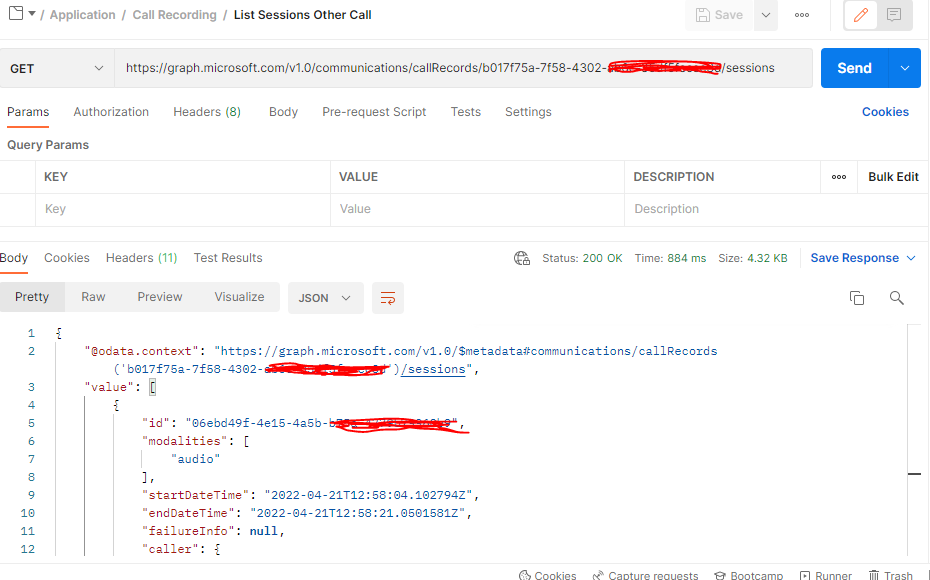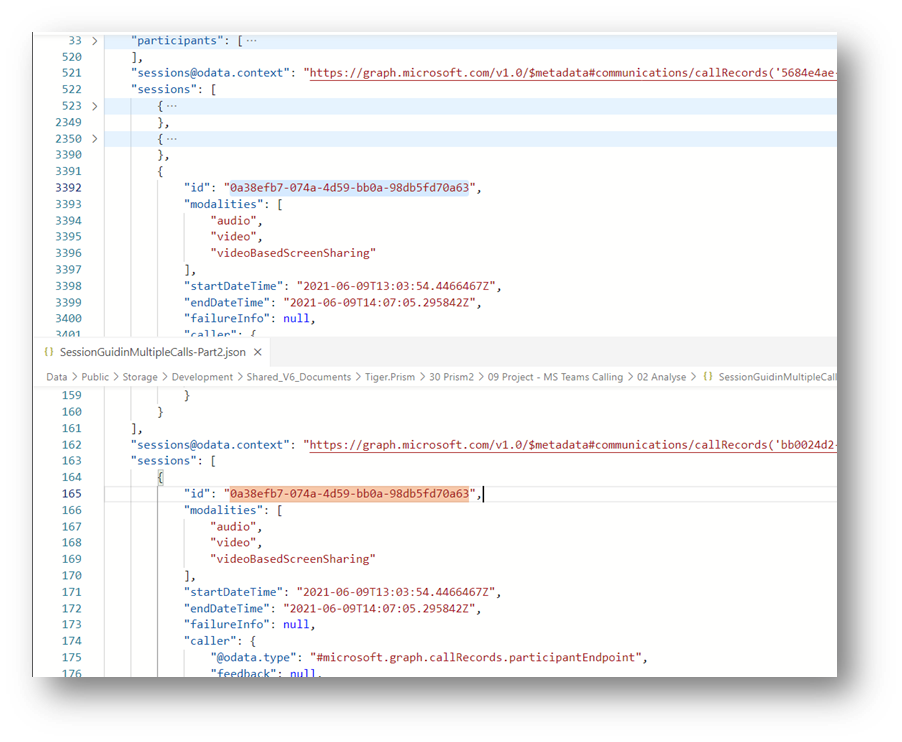Hi @Phil Smith ,
I tried to replicate above mentioned issue at my side in my developer tenant and based on my testing, Call Records List Sessions API working as expected and as per the documentation. All session IDs are unique in each call's API response and I could n't find any session ID is being overlaped between these two calls.
GET https://graph.microsoft.com/v1.0/communications/callRecords/{id}/sessions
Call 1 API response ::

Call 2 API response : :

If the issue still persist in your tenant then I would advise you to open a support case with Graph API team for a dedicated support and escalalating it to Microsoft engineering team to analyze it and further assistance. You can raise the case either from Azure portal or M365 admin center of your tenant.
Hope this helps.
If the answer is helpful, please click Accept Answer and kindly upvote it. If you have any further questions about this answer, please click Comment.

